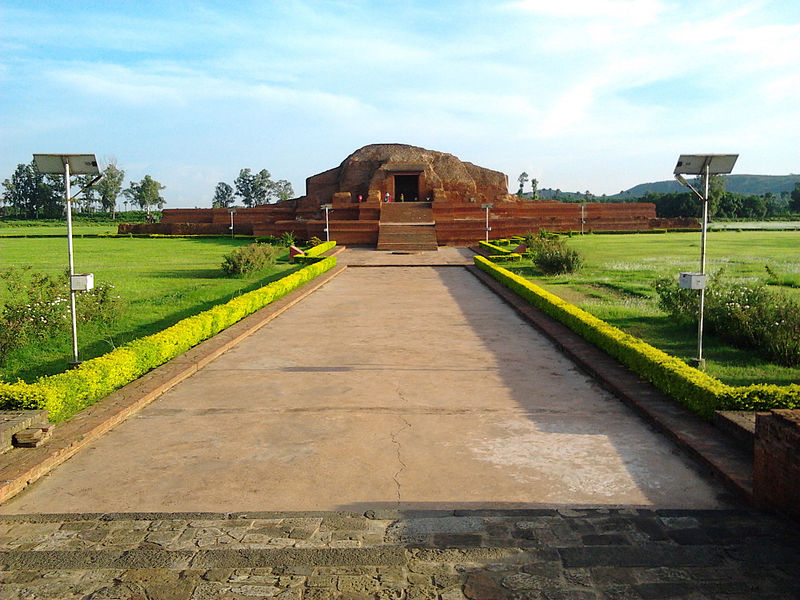Vikramashila Mahavihra Monestery- Bihar

Address
Vikramashila Mahavihra Monestery- Vikramshila Site Rd, Antichak, Bihar 813225
Diety
Buddha
Introduction
Vikramashila was one of the three most important Buddhist monasteries in India during the Pala Empire, along with Nalanda and Odantapuri. Its location is now the site of Antichak village, Bhagalpur district in Bihar. The Stupa is a sacred solid structure raised over the body remains or belongings of Buddha or a distinguished monk; or to commemorate any event associated with them. But some stupas are merely symbolic made for worship by the monks. A votive stupa is a miniature stupa erected by a devotee in gratitude of fulfilment of his desire.
Puranic Significance
Vikramashila was established by the Pala emperor Dharmapala (783 to 820 AD). It was destroyed by the forces of Muhammad bin Bakhtiyar Khalji around 1193. The Vikramashila stupa built for the purpose of worship is a brick structure laid in mud mortar and stands in the centre of the square monastery. This two terraced stupa is cruciform on plan and about 15 meters high from the ground level. The lower terrace is about 2.25 meters high from the ground level and the upper terrace is at a similar height from the lower side. At both terraces there is a circumambulatory path, the lower about 4.5 metres wide and the upper about 3 metres wide. The main stupa placed over the upper terrace is accessible through a flight of steps on the north side on each of the four cardinal directions. There is a protruding chamber with a pillared antechamber and a separate pillared mandapa in front, placed beyond the circumambulatory passage. In the four chambers of stupa were placed colossal stucco images of seated Buddha of which three were found in situ, but the remaining of the north side was possibly replaced by a stone image after the clay image was somehow damaged. All the stucco images are unfortunately broken above the waist. The images are placed over a brick pedestal having traces of painting in red and black pigments. The walls and floors of the chamber and antechamber were plastered with lime. The walls of both the terraces are decorated with moldings and terracotta plaques which testify the high excellence of terracotta art flourishing in the region during Pal period (8th to 12th centuries). The plaques depict many Buddhist deities like Buddha, Avalokiteshvara, Manjusri, Maitreya, Jambala, Marichi, and Tara, scenes related to Buddhism, some social and hunting scenes, and a few deities like Vishnu, Parvati, Ardhanarisvara and Hanuman. Many human figures, like those of ascetics, yogis, preachers, drummers, warriors, archers, snake charmers, etc., and animal figures like monkeys, elephants, horses, deer, boar, panthers, lions, wolves, and birds, are also depicted. Architecture of the stupa and the terracotta plaques bear great resemblance to the Somapura Mahavihara, Paharpur (Bangladesh).
Century/Period/Age
783 to 820 AD
Managed By
Archaeological Survey of India (ASI)
Nearest Bus Station
Kahalgaon, Anadipur
Nearest Railway Station
Bikramshila Station
Nearest Airport
Patna




